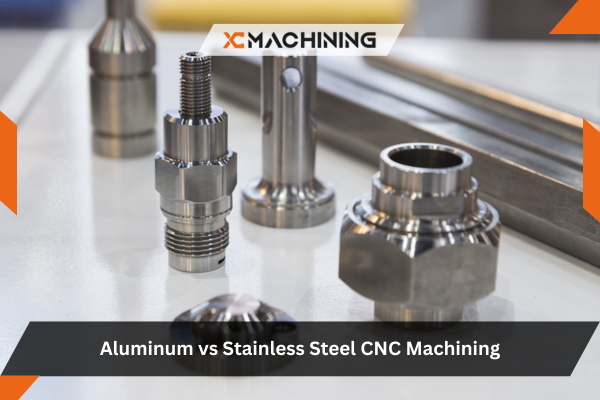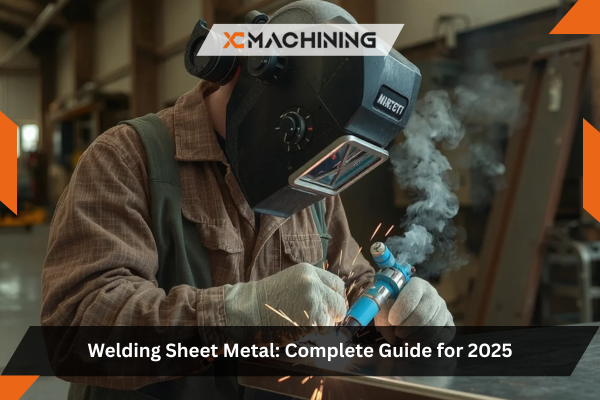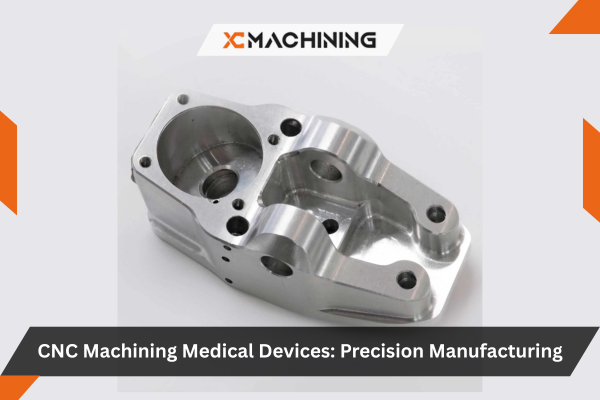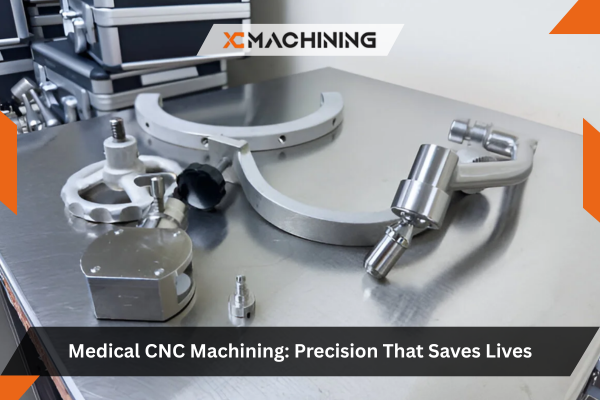Selecting the right material for your CNC machining project can feel overwhelming, especially when you’re choosing between aluminum and stainless steel. I’ve been running custom CNC machining services for over a decade, and this decision comes up in nearly every client conversation—whether they need CNC prototyping services for a new product or low volume Aluminum vs Stainless CNC machining for specialty parts.
The truth is, there’s no universally “better” material. What works perfectly for aerospace components might fail miserably in food processing equipment. This guide will help you understand which material fits your specific needs based on real manufacturing experience, not just theoretical data.
Why Your Material Choice Affects Everything
When clients come to me for precision machining services, material selection is one of the first conversations we have. It affects your timeline, budget, part performance, and product longevity in ways that aren’t obvious until you’re deep into production.
Last year, a medical device startup approached us for CNC milling and turning services. They wanted stainless steel components because they assumed it was “more professional.” After discussing their actual requirements—lightweight handheld devices used indoors—we switched to aluminum. The result? They cut production costs by 58% and reduced their product weight by 340 grams per unit. Those savings let them bring the product to market three months earlier than planned.
But I’ve also seen the opposite mistake cost companies dearly. A contractor once insisted on aluminum for outdoor marine equipment despite my warnings about corrosion in saltwater environments. Within nine months, the parts showed severe pitting and surface degradation. The redesign in 316 stainless steel ended up costing nearly three times the original project budget.
Your material choice impacts:
- Produktionsgeschwindigkeit – Aluminum machines 3-4 times faster than stainless steel
- Total project cost – Including material, machining time, and tool wear
- Part weight – Critical for portable devices and aerospace applications
- Dauerhaftigkeit – How long parts last in your specific operating environment
- Surface finish quality – Each material achieves different finishes naturally
- Post-processing needs – Some applications require anodizing or passivation
Understanding Aluminum for CNC Machining Applications
Aluminum dominates custom CNC-Bearbeitungsdienstleistungen for good reason. When you need fast turnaround, excellent surface finish, and lightweight parts without emptying your budget, aluminum often delivers the best value.
Why Aluminum Excels in CNC Operations
After machining thousands of aluminum parts across various industries, I’ve learned exactly where this material shines. The machinability is outstanding—I can run cutting speeds of 400-600 surface feet per minute compared to 80-120 for stainless steel. This isn’t just about speed; it’s about economics. A part that takes 40 minutes in aluminum might require 2.5 hours in stainless steel.
Weight advantage you can feel: Aluminum’s density of 2.7 g/cm³ means it weighs roughly one-third what stainless steel does at 8.0 g/cm³. I recently completed a Aluminum vs Stainless CNC prototyping services project for an electric scooter manufacturer. The aluminum motor housing weighed 420 grams versus 1,260 grams for the stainless steel version. That 840-gram difference per scooter significantly improved battery range and handling.
Natural corrosion protection: Aluminum instantly forms an aluminum oxide layer when exposed to air. This microscopic protective coating prevents further corrosion in most environments. For indoor electronics, consumer products, and general industrial components, this natural protection works perfectly without additional treatment.
Thermal management capabilities: With thermal conductivity around 205 W/(m·K), aluminum excels at moving heat away from critical components. Our CNC milling and turning services frequently produce LED housings, power supply enclosures, and computer components specifically because aluminum dissipates heat so effectively.
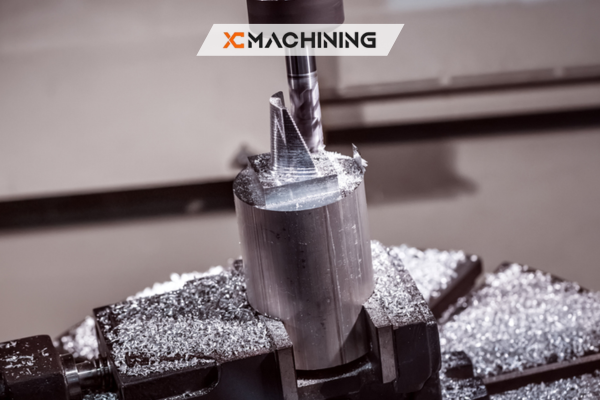
Common Aluminum Grades in Precision Machining Services
Different aluminum alloys serve different purposes. Here’s what I stock and recommend most often:
6061-T6 (The everyday workhorse)
- Tensile strength: 310 MPa (45,000 psi)
- Excellent weldability and formability
- Great corrosion resistance for most applications
- Best for: Brackets, enclosures, frames, general components
- Cost: Most economical aluminum option
7075-T6 (High-strength specialist)
- Tensile strength: 572 MPa (83,000 psi)
- Nearly matches some steel grades for strength
- Maintains aluminum’s weight advantage
- Best for: Aircraft components, high-stress automotive parts, performance equipment
- Cost: Premium pricing (2-3x more than 6061)
2024-T3 (Aerospace standard)
- Superior fatigue resistance
- Ausgezeichnete Bearbeitbarkeit
- Poor weldability (use mechanical fasteners instead)
- Best for: Aircraft structures, aerospace fasteners
- Cost: Moderate to high
Real-World Aluminum Limitations
Being honest about limitations is important when providing custom CNC machining services. Aluminum starts losing strength above 200°F and isn’t suitable for high-temperature applications. I learned this early when a client wanted aluminum parts for industrial heating equipment—those parts deformed within the first week of operation.
Aluminum also struggles with:
- Heavy structural loads compared to steel’s absolute strength
- Harsh chemical environments without protective coatings
- Saltwater exposure (requires anodizing or protective treatments)
- Applications requiring maximum hardness and wear resistance
Stainless Steel in CNC Manufacturing
When clients need Aluminum vs Stainless CNC machining services for demanding applications—food processing, marine environments, medical devices, or high-temperature operations—stainless steel becomes the obvious choice despite higher costs.
What Makes Stainless Steel Special
The defining characteristic of stainless steel is its chromium content (minimum 10.5%), which creates a passive, self-healing oxide layer. This gives stainless steel its remarkable corrosion resistance and durability.
Strength you can depend on: Standard 304 stainless delivers about 515 MPa (75,000 psi) tensile strength, while hardened grades like 17-4 PH exceed 1,000 MPa. When your application involves high loads, impacts, or safety-critical functions, this strength provides essential security margins.
Heat resistance that aluminum can’t match: Rostfreier Stahl maintains its properties well above 500°C and melts around 1,400-1,500°C. Our precision machining services regularly produce industrial oven components, exhaust parts, and cooking equipment that must withstand extreme temperatures.
Corrosion resistance in harsh environments: The chromium oxide layer is self-healing, meaning scratches or damage expose fresh metal that immediately reforms the protective layer. For marine hardware, chemical processing, and food-contact surfaces, this protection is irreplaceable.
Common Stainless Steel Grades
304 Stainless Steel (General purpose)
- The most widely used stainless grade
- Contains ~18% chromium, 8% nickel
- Non-magnetic (austenitic structure)
- Excellent formability and weldability
- Cost-effective for most applications
316 Stainless Steel (Marine grade)
- Adds 2-3% molybdenum for superior corrosion resistance
- Essential for saltwater and chloride environments
- Medical-grade applications
- 20-30% cost premium over 304
17-4 PH Stainless Steel (High strength)
- Precipitation-hardening for maximum strength
- Magnetic properties
- Used in aerospace and high-performance applications
- Requires heat treatment after machining
Machining Challenges with Stainless Steel
Providing CNC milling and turning services for stainless steel requires different approaches than aluminum. The work-hardening characteristic means the material gets harder as you cut it, demanding sharp tools and aggressive cutting parameters. You can’t take timid passes—that just makes the problem worse.
Tool wear is significant. Carbide cutting tools that last 50+ hours in aluminum might give me only 10-15 hours in stainless steel. Combined with higher tool costs for stainless-capable grades, this substantially increases machining expenses.
Side-by-Side Material Comparison
Here’s how these materials stack up across the factors that actually matter in custom CNC machining services:
PropertyAluminum (6061-T6)Stainless Steel (304)Winner
Density 2.7 g/cm³ 8.0 g/cm³ Aluminum (3x lighter)
Tensile Strength 310 MPa 515 MPa Stainless Steel
Strength-to-Weight Higher Lower Aluminum
Bearbeitbarkeit Excellent (4x faster) Moderate Aluminum
Corrosion (general) Good Excellent Stainless Steel
Saltwater Resistance Poor Excellent (316 grade) Stainless Steel
Thermal Conductivity 205 W/(m·K) 16 W/(m·K) Aluminum (10x better)
Max Temperature ~200°C 500-800°C Stainless Steel
Materialkosten $3.50-$5.00/kg $7.00-$10.00/kg Aluminum
Bearbeitungskosten Lower 3-4x higher Aluminum
Schweißeignung Excellent Excellent Tie
Real Production Cost Analysis
Let me show you actual numbers from a recent low volume CNC machining project—50 identical parts measuring 100mm × 80mm × 30mm with internal features:
Aluminum 6061-T6:
- Material per part: $9.20
- CNC milling time: 42 minutes
- Machining cost @ $90/hour: $63.00
- Tool wear allocation: $2.80
- Total per part: $75.00
- 50-part run: $3,750
Stainless Steel 304:
- Material per part: $18.50
- CNC milling time: 165 minutes
- Machining cost @ $90/hour: $247.50
- Tool wear allocation: $14.20
- Total per part: $280.20
- 50-part run: $14,010
The stainless steel parts cost 3.7 times more to produce. However, if the application requires stainless steel’s properties—corrosion resistance, strength, or temperature tolerance—that cost is justified. Using aluminum where stainless is needed leads to field failures that cost far more than the initial savings.
When to Choose Each Material
Based on my experience providing precision machining services across multiple industries, here’s how to make the right choice:
Choose Aluminum For:
✓ Lightweight applications
- Drones, UAVs, and aerospace components
- Portable tools and handheld devices
- Automotive parts where weight reduction matters
- Robotics and automation equipment
✓ Cost-sensitive projects
- CNC prototyping services (faster, cheaper iteration)
- Low volume CNC machining runs
- Startup products with tight budgets
- Consumer electronics enclosures
✓ Heat dissipation needs
- LED housings and lighting fixtures
- Power electronics enclosures
- Computer and telecom equipment
- Battery management systems
✓ Indoor applications
- Office equipment
- Konsumgüter
- Industrial machinery (non-corrosive environments)
- Display and mounting hardware
✓ Fast turnaround requirements
- Schnelles Prototyping
- Emergency replacement parts
- Time-critical production runs
Choose Stainless Steel For:
✓ Harsh environment exposure
- Marine hardware and boat components
- Outdoor architectural elements
- Chemische Verarbeitungsanlagen
- Saltwater or corrosive atmosphere applications
✓ Food and medical applications
- Ausrüstung für die Lebensmittelverarbeitung
- Commercial kitchen components
- Chirurgische Instrumente
- Medical device housings
- Pharmaceutical manufacturing parts
✓ High-temperature operations
- Industrial oven components
- Exhaust system parts
- Heat exchanger elements
- Cooking equipment and appliances
✓ Maximum strength requirements
- Safety-critical components
- Heavy-duty industrial equipment
- High-load structural parts
- Impact-resistant applications
✓ Long service life priority
- Infrastructure components
- Permanent installations
- Hard-to-replace parts
- High-reliability applications
Surface Treatment Options
Aluminum Surface Treatments
When providing custom CNC machining services, I often recommend surface treatments to enhance aluminum’s performance:
Anodizing (Most common)
- Creates hard, corrosion-resistant oxide layer
- Type II: 0.0002-0.001″ thick, decorative and protective
- Type III (Hard Anodizing): Thicker, harder, wear-resistant
- Allows color options (black, blue, red, gold, etc.)
- Cost: $0.60-$2.50 per square inch
- Essential for outdoor aluminum parts
Pulverbeschichtung
- Durable, attractive finish
- Excellent UV and weather protection
- Wide color selection
- Good impact resistance
- Cost: $1.50-$4.00 per square inch
Chromate Conversion (Alodine)
- Thin chemical coating
- Maintains electrical conductivity
- Excellent paint adhesion base
- Common in aerospace applications
- Cost: $0.30-$0.80 per square inch
Stainless Steel Surface Treatments
Passivation (Highly recommended)
- Removes free iron and embedded particles
- Enhances natural chromium oxide layer
- Essential after machining operations
- Cost-effective: $25-$60 per batch
- Standard practice for quality precision machining services
Electropolishing
- Removes surface material microscopically
- Creates extremely smooth, clean finish
- Improves corrosion resistance 30-40%
- Required for pharmaceutical and food-grade equipment
- Cost: $3.00-$8.00 per square inch
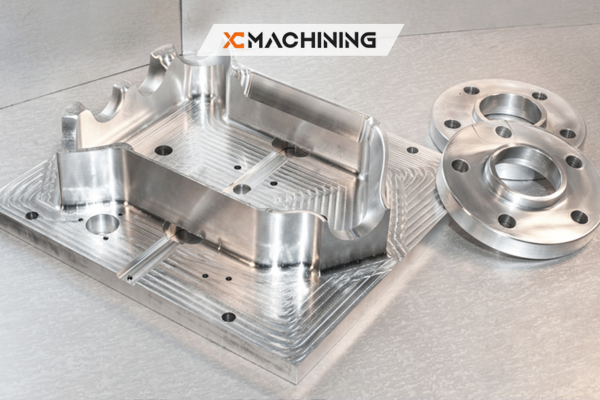
Common Material Selection Mistakes
After years of providing Aluminum vs Stainless CNC milling and turning services, I’ve seen these mistakes repeatedly:
Mistake #1: Ignoring galvanic corrosion Mixing aluminum parts with stainless steel fasteners in outdoor applications causes rapid aluminum corrosion. Always use isolation methods—plastic washers, coatings, or matching materials—for dissimilar metal combinations.
Mistake #2: Direct material substitution without design changes You can’t simply replace a stainless steel design with aluminum without adjusting for aluminum’s lower stiffness (modulus of elasticity: 10 million psi vs. 29 million psi). Increase wall thickness, add reinforcing ribs, or use higher-strength 7075 aluminum.
Mistake #3: Over-specifying materials to appear “premium” Using 316 stainless for indoor, non-corrosive applications wastes 30-40% of your budget. Similarly, specifying stainless when aluminum works fine inflates costs unnecessarily.
Mistake #4: Underestimating environmental factors Indoor prototypes that work perfectly fail rapidly outdoors without proper material selection and surface treatment. Always consider the actual operating environment during CNC prototyping services.
Mistake #5: Forgetting thermal expansion differences Aluminum expands about 35% more than stainless steel when heated. Mixed-material assemblies need proper clearances, or thermal cycling causes binding and failure.
Making Your Final Decision
After providing custom CNC machining services for hundreds of projects, I’ve developed a straightforward decision framework:
Step 1: List your non-negotiable requirements
- Maximum acceptable weight
- Minimum required strength
- Operating temperature range
- Environmental exposure (indoor/outdoor/marine/chemical)
- Corrosion resistance level needed
- Budget constraints
- Production timeline
Step 2: Eliminate unsuitable materials If you need saltwater resistance, eliminate aluminum. If weight is absolutely critical and strength requirements are moderate, eliminate stainless steel. If operating temperature exceeds 200°C, aluminum is out.
Step 3: Calculate total cost, not just material cost Consider machining time, tool wear, surface treatments, expected service life, and replacement costs. Sometimes the “expensive” material is actually more economical over the product lifecycle.
Step 4: Start with prototypes For Aluminum vs Stainless CNC prototyping services, consider making test parts in both materials if you’re uncertain. The cost of a few prototype parts is minimal compared to choosing the wrong material for production.
Step 5: Consult with your machine shop early Experienced precision machining services providers have seen countless applications and can suggest optimizations you might not consider. We often propose design modifications that improve manufacturability and reduce costs regardless of material choice.
Working with Professional CNC Machining Services
Finding the right manufacturing partner matters as much as choosing the right material. When evaluating custom CNC machining services providers, look for:
- Material expertise: Can they explain the practical differences between materials for your specific application?
- Design feedback: Do they offer suggestions to optimize your design for manufacturability?
- Quality certifications: ISO 9001, AS9100 (aerospace), or ISO 13485 (medical devices) as applicable
- Equipment capabilities: Modern CNC mills and lathes with appropriate capabilities
- Surface treatment options: In-house or reliable partnerships for anodizing, passivation, etc.
- Experience in your industry: Have they made similar parts before?
For low volume CNC machining projects, flexibility and quick turnaround often matter more than the absolute lowest per-part cost. For production runs, process optimization and consistency become critical.
Schlussfolgerung
After 13 years of running Aluminum vs Stainless CNC milling and turning services, I’ve learned that aluminum and stainless steel each have ideal applications where they excel. Aluminum dominates when you need lightweight, cost-effective, thermally conductive parts with fast production times. Stainless steel wins when durability, strength, corrosion resistance, and temperature tolerance are non-negotiable.
The “best” material is the one that meets your specific requirements without overengineering or cutting corners. A $75 aluminum part that performs perfectly is better than a $280 stainless steel part that’s overbuilt for the application. Conversely, a $280 stainless steel part that lasts 15 years is better than a $75 aluminum part that fails after 18 months.
Take time to honestly assess your requirements, consult with experienced precision machining services providers, and make your decision based on facts rather than assumptions. Whether you need CNC prototyping services for initial testing or full production runs, choosing the right material from the start saves time, money, and headaches down the road.

